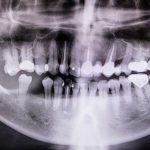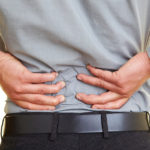By David Blyweiss, M.D.
With the short, dark days of winter upon us, many people find themselves with a case of winter blues. But some suffer from a more severe form of seasonal depression known as seasonal affective disorder (SAD). In fact, as many as 10 million Americans suffer from SAD, and 75 percent of them are women.
The symptoms of SAD include feeling sluggish and withdrawn, craving sweet and starchy foods, gaining weight, and sleeping whenever and for as long as you can. These changes usually begin as the days grow shorter in late fall or early winter and lift with the longer, more light-filled days of spring and summer. Why does this occur only during the winter months? Longer hours of darkness can disrupt your circadian rhythms (your body clock) and cause the body to produce too much melatonin, making it harder to get out of bed in the morning. A drop in serotonin may also accompany longer hours of darkness. Thankfully, there are a variety of natural therapies that directly address the lack of light and its mood- and sleep-altering consequences.
The most well-researched remedy is the “light box”—a source of full-spectrum light that mimics the sun. In clinical trials, the light box has proven more effective than antidepressant drugs for SAD and has no negative side effects. The standard dose is 10,000 lux of light for 30 minutes daily (from late fall to early spring) and all you have to do to reap its mood-boosting benefits it to simply sit in front of—but don’t look at—the box.
MD Exposes the Hidden Danger to Your Eyes

When your eyesight starts to fail, it's a real problem. Suddenly you can't go to the grocery store... you can't get to the doctor if you have an emergency... you can't meet your friends for dinner…
Your "regular" doctor doesn't have time to keep up with the latest research. And the same goes for eye doctors. They go to school to learn how to fit you for glasses and contacts, but have no way of preventing the damage and loss of eyesight that threatens your freedom and independence.
Let me show you something that explains a LOT about how your eyes work.
In my FREE Special Report, I'll show you a HUGE, untapped resource for your eyes that safely and naturally restores clear, effortless eyesight.
Click here to get started...
Taking vitamin D—affectionately called the sunshine vitamin—can also help lighten up your mood. During the winter months, our levels of D decrease significantly. In some people, this deficiency may produce SAD symptoms. Taking 2,000 to 3,000 IU of D daily for three to six months may make a significant difference. But, before you begin taking a high dose of D, get your levels checked with a blood test.
But vitamin D isn’t the only nutrient that can help alleviate SAD. I also recommend a high-dose multivitamin and mineral supplement that includes the B vitamins. The Bs, which may be low in people who suffer from depression, help protect against stress. Include at least 800 mcg. of folic acid and 200 mcg. each of selenium and chromium, which may also be depleted in people with depression. Add to this regimen 1,000 mg. two times a day of vitamin C and 3,000 mg. per day of omega-3 fish oil, divided in two doses.
For the most effective and enduring results year-round, lay off or cut down on sugar and meat, and add plenty of whole foods and fiber to your diet. Eat whole grains, fruit, nuts and omega-3–rich fish (sardines are particularly good for depression), and include fresh, organic fruits and veggies with every meal.
Are You Suffering From...
- Love handles and a pot belly
- Romance that isn't what it used to
- Forgetfulness and inattention
- Low (or no) strength and endurance
- A sex drive that's shifted into neutral...or worse
If so...you may have Mature Male Burnout. Click here to discover more about this unique condition and what you can do about it.
Since SAD can alter normal melatonin production—which can affect your sleep cycle—you may benefit from taking supplements. Melatonin levels increase before bedtime, peak during the night and gradually decrease as morning approaches. Taking supplemental melatonin one to two hours before bedtime improved nighttime sleep quality and daytime vitality of SAD patients, according to a 2003 study of 58 women in Helsinki, Finland—a place all too familiar with SAD. I recommend taking 1-2 mg. of melatonin before turning in to rebalance your melatonin levels.
Along with tweaking your diet and taking these targeted nutrients, I’ve found that exercise is one of the single best treatments for SAD. Just about all forms of depression come with physical and emotional inertia and low levels of neurotransmitters like serotonin—all of which improve with exercise. One study even showed that exercise was more effective at relieving depression than a serotonin-boosting antidepressant.
Many studies have focused on jogging, but most any form of movement can help. A number of my patients boost their energy by dancing to music in the morning. Yoga also has mood-enhancing benefits. Begin gradually with 10 minutes of walking or dancing a day (and build up to 30 minutes or so every day), or join a beginner’s yoga class a couple of times a week. Adopt this approach, and this winter should be far brighter and happier.
References:
Anderson JL. Lux vs. wavelength in light treatment of Seasonal Affective Disorder. Acta Psychiatrica Scandinavica. 2009;120:203-212.
Brown MA. The effects of a multi-modal intervention trial of light, exercise, and vitamins on women’s mood. Women & Health. 2001;34:93-112.
Gloth FM 3rd. Vitamin D vs broad spectrum phototherapy in the treatment of seasonal affective disorder. Journal of Nutrition, Health and Aging. 1999;3:5-7.
Leppämäki S. Effect of controlled-release melatonin on sleep quality, mood, and quality of life in subjects with seasonal or weather-associated changes in mood and behaviour. European Neuropsychopharmacology. 2003;13:137-145






